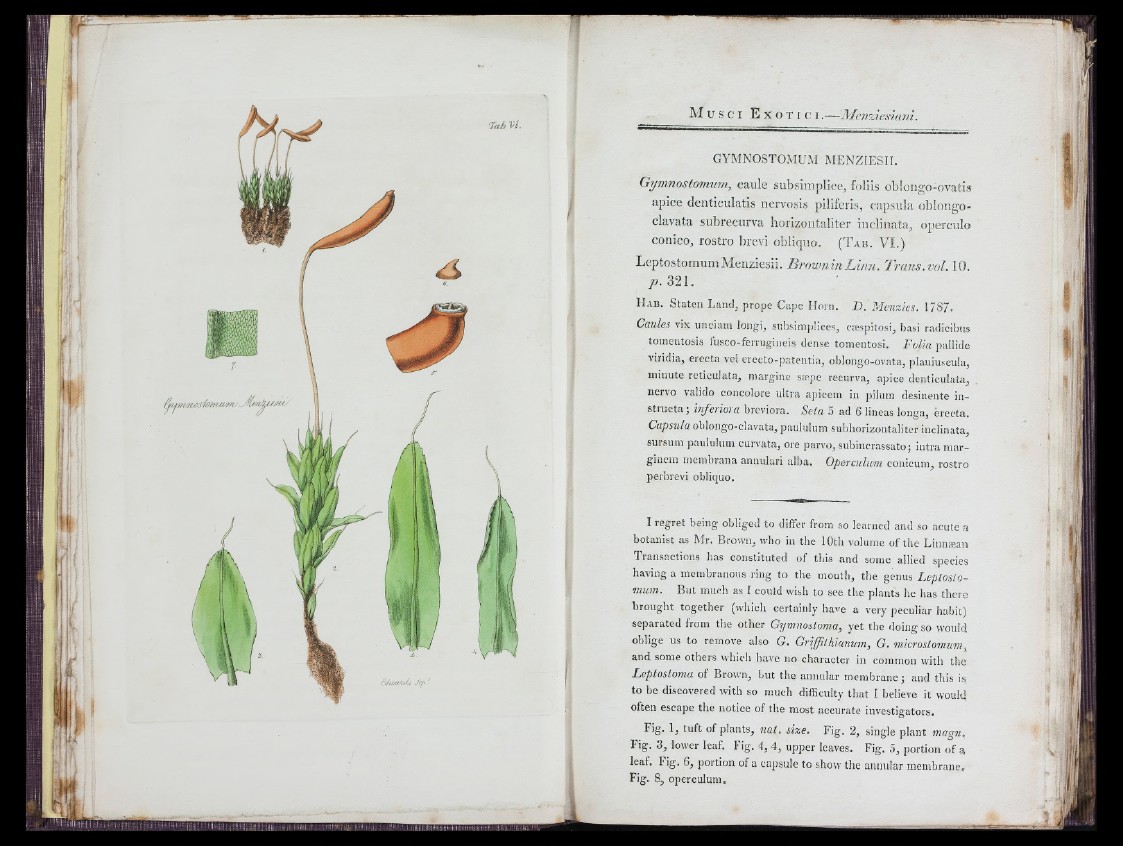
í 'I
, l í
!
1
GYMNOSTOMUM MENZIESII.
G ym n o stom um , c au le su b siin p lic e , foliis oblo itg o -o v aíis
apice d en tic u la tis nervosis piliferis, cap su la o b lo u g o -
c lava ta su b re cu rv a h o riz o n ta lite r io c lin a ta , operculo
conico, ro s tro brevi o bliquo. (T a b . V I .)
L e p to s tom um M e n z ie sii. B r n w n i n L v m . T r a n s , voi. 10.
p . Z 1 \ .
H a b . Staten Land, prope Cape Horn. B . Menzies. 1787.
Caules vix uneiani longì, sr.bsimpüce.s, cespitosi, basi radicibus
toinentosis fusco-ferrugineis dense tomento.si. Folia pallide
viridia, erecta vel erecto-patentia, oblongo-ovata, plauiuscula,
minute reticulata, margine smpe recurva, apice denticulata,
nervo valido concolore ultra apicem in pilum desinente instructa
; inferiora breviora. Seta 5 ad 6 lineas longa, erecta.
Cup-vri/a oblong'o-clavata, paululum subhorizontaliter inclinata,
sursum paululum curvata, ore parvo, subincrassato; intra mar-
ginem membrana annulari alba. Operculum conicum, rostro
perbrevi obliquo.
I regret being obliged to differ from so learned and so acute a
botanist as Mr. Brown, who in the 10th volume of the Liiiiia;an
Transactions has constituted of this and some allied species
having a membranous ring to the mouth, the genus Leploslo-
mum. But much as I could wish to see the plants he has there
brought together (which certainly have a very peculiar habit)
separated from the other Gymnostoma, yet the doing so would
oblige us to remove also G. Griffithlanum, G. microslomum,
and some others which have no character in common with the
Leptosloma of Brown, but the annular membrane; and this is
to be discovered with so much difficulty that I believe it would
often escape the notice of the most accurate investigators.
Fig. 1, tuft of plants, nat. size. Fig. 2, single plant magn.
Fig. 3, lower leaf. Fig. 4, 4, upper leaves. Fig. 5, portion of ^
leaf. Fig. 6, portion of a capsule to show the annular membrane.
Fig. 8, operculum.